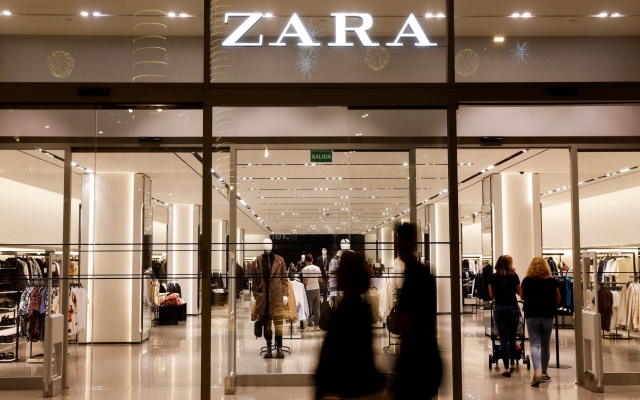 Lots of failed returns: Judith Woods fights for a refund on Main Street. Photo: Jamie Lorriman for The Telegraph
Lots of failed returns: Judith Woods fights for a refund on Main Street. Photo: Jamie Lorriman for The Telegraph
Noon in the morning Ground floor of a famous fashion store. While customers wait to try on bright spring dresses or pay for trendy bomber jackets, the endorphin-rich atmosphere is lively and bustling.
But not here. Not where I languish with over a dozen other defeated buyers; in a bleak return line tucked away on the top floor.
The service is icy. The mood is gloomy and quiet, except for the excited sighs and the growing sense of disappointment.
Sometimes someone (guess who?) grumbles in an undertone that there should be more staff at the counter. The assistant, with the grouchy air of someone doing us a really great favor, ignores the seething mutiny.
Forget retail therapy. This is street hell. It's slow, inefficient, and exhausting. Far from the dizzying pleasure of filling and, oh well, maybe overflowing, these online shopping carts from the comfort of your couch,
Big companies make buying things surprisingly easy with a touch or a keystroke. Why then is it so difficult and joyless to return things? I'll be honest; for one crazy moment it even occurs to me that we are being punished on purpose.
“You are not imagining, you are really being punished,” is the verdict of Henley Business School lecturer Bahrman Mahmoudi Kahriz, who specializes in consumer behavior and emotions. “Some retailers use the returns queue as a deliberate deterrent. And judging by the reaction of customers, it works. Companies offer generous return policies to encourage customers to spend more; because they are confident that they can return purchases, which reduces the stress of possibly making the wrong decision.
“But once the sale has taken place, ensuring that the return process will either cost money or be inconvenient, lengthy and not very hilarious designed to discourage you from returning items.”
New data from the British Fashion Council shows that around 30% of online purchases are unwanted, compared to 10% of in-person clothing purchases. Last year, fashion companies lost at least £7bn due to returns.
Serial returners, cloakroom attendants and braces
In recent days, Generation Z has been given much of the blame for the #KeepOrReturn trend, with influencers showcasing their shopping «catch» in 30-second video clips set to music, and hundreds — thousands — of commentators judging what's left, and what is not. what is sent back.
Online stores calculate the cost. It's a sign of the times that giant Asos just announced a £100 million drop in profitability due to shoppers who regularly return discounted items buying discounted clothing only to return most of them.
And this despite the fact that in 2019 the company promised to crack down on the worst offenders by closing the accounts of those who, in its opinion, took advantage of its return policy.
“What happens to the return, is it in in store or online, whether it will go through a manual process to determine if it can be returned, or if it needs to be repaired, or if it just needs to be recycled,” says retail analyst Andrew Busby. All this requires resources and costs money.
«Often you get to the point where it just becomes commercially unprofitable.» In this case, the clothes go straight to the landfill or are burned; Last year alone, 23 million tonnes were destroyed in the UK, resulting in approximately 750,000 tonnes of CO2 emissions.
Shame, yes. People of my generation do not approve of wastefulness. So it's very disappointing to learn that retailers are increasingly blaming us as well; we all seem to be stigmatized because of our shopping habits.
First come the «wardrobes»; usually young people who buy clothes, wear them, and then return them. Social media is littered with guides on how to remove and then reattach labels and those bright red anti-return tapes; which are threaded through the sleeves of clothing, making them impossible to wear without being cut off. At least in theory. Then there are those «serial returnees» mentioned earlier. And finally, (mea culpa) is the «paper clips», people like me who are sincerely looking for a dress for a wedding or a pair of good ankle boots and have to order several sizes, marking each set of staples, hence the name.
 Judith falls into the bracketed category. Written by Jamie Lorriman for The Telegraph.
Judith falls into the bracketed category. Written by Jamie Lorriman for The Telegraph.
I say we should because we're just not sure what will fit. For decades, retailers have refused to standardize on sizes, and I'm definitely not the only woman who can be small, medium, or large at the same time—sometimes in the same store—depending on the clothing and brand.
Special mention goes to the men, who are online dream customers. Why? Because two-thirds of them never return unwanted items on the grounds that they are «not to be disturbed,» according to a survey by menswear brand Spoke. After my recent dismal experience of wandering around stores returning items, I honestly don't blame them.
'The customer is wrong'
The whole return process has become unnecessarily complicated, with no single policy. . Instead, the rules vary greatly from brand to brand and platform to platform.
I could of course organize a collection, but to be honest, if I had time to sit at home waiting for a courier, I I would have had time to visit the shops first.
What’s more, a quarter of the top online retailers currently charge shoppers for returns, despite a buy-now-pay-later study by finance firm Klarna showing that 84% of shoppers are more likely to buy from online sellers that offer free returns. In addition to costing an average of £3.53 to raise funds, it also takes an average of nine days to process a refund.
“There has been a strange transition from “the customer is always right” to “the customer is always right.” the client is wrong and is probably trying to deceive us,” says John Sill of business consulting The Foundation. «Being a customer is more and more like a war where customers have to do whatever it takes to prove themselves right.»
He tells his own ridiculous story about spotting a cheap ex-show chair while shopping with wife and baby. Since he wasn't planning on making such a large purchase, he asked if it could be delivered.
The surreal exchange went something like this:
«Sorry sir, because this is a former display we can't deliver it. You have to take him home – today.”
«Right. Can I take the chair to the car in your parking lot to see if it fits?»
«No. You have to buy it first.”
“If I buy a chair and take it outside and it doesn’t fit me…can I bring it back and get a refund?”
“ No refund for former display furniture»
p>
«'If I buy a chair and take it outside and it doesn't fit me, can I bring it back and leave it here while I won't be able to pick it up within a week?»
«No, you should pick it up today.»
To his credit, he didn't smash the store in a buying rage; he bought a chair and it fit in his car. But he won't be a regular customer. Size matters, whether it's furniture or women's clothing.
“Frankly, when it comes to returns, online retailers are the architects of their own failures,” is the uncompromising conclusion of Joan Harvey, Senior Lecturer in Business at Newcastle University and Fellow of the British Psychological Society. “If the sizes were universal and the descriptions online had more details, we wouldn't have to order multiple sizes. Instead of blaming the customers, big fashion brands should adapt to the online market they have created themselves.”
For a nation of shopkeepers, you would think we could do better. Until then, women like me will continue to bracket several sizes until we find the right one that fits everywhere. Our only consolation is that now that their bottom line has taken a hit, retailers may just start paying more attention to ours.
How stores have changed
In marks & Spencer, my return was met with an empty, albeit polite, rejection because the shop floor staff had no idea about the «guest brands» sold online. I had to ask them to check the website before they agreed to pick up my Freya swimwear. The M&S representative assured me that this was an isolated incident and colleagues usually keep up to date with the latest developments.
At Zara, the queue was slow and the department was understaffed. I was told that I need to show the QR code on my phone. This turned out to be impossible as there was no client Wi-Fi.
The assistant suggested that I take the escalator down the stairs and go outside, use the 4G signal, take a screenshot of the code and come back because «that's what most people do.»
A Zara spokesperson said: “We are constantly investing in improving the customer experience by adding automatic returns to our newest and updated stores. Our newest stores also have dedicated return areas to further improve customer service.” This includes scanning your receipt and selecting the item you wish to return. The return machine produces a label and a paper bag. You put the product in a paper bag, put a label on it, and then send the bag to the machine.
 Zara rolls out automatic returns in their new stores. Credit: Reuters
Zara rolls out automatic returns in their new stores. Credit: Reuters
Next, known for its fast and efficient online service, has been outstanding; no chatter, no discontent, not even paperwork. A cursory glance at the labels was enough and everything was immediately sorted.
In Benetton I bought four pairs of summer trousers, but I was told that I had to send them back to Italy, according to the instructions and not returnable to the store. Oops. Too bad.
Many hours later, when I sadly handed over six swimsuits and a bikini, most of which I hadn't even tried on, to the jovial lady in John Lewis, she showed me nothing but sympathy. When I offered a clue like «Really? Are you sure?» should appear on the Internet for anyone who orders so many bathing suits, especially late at night, she laughed. Too bad, because that's what I meant.






















































Свежие комментарии